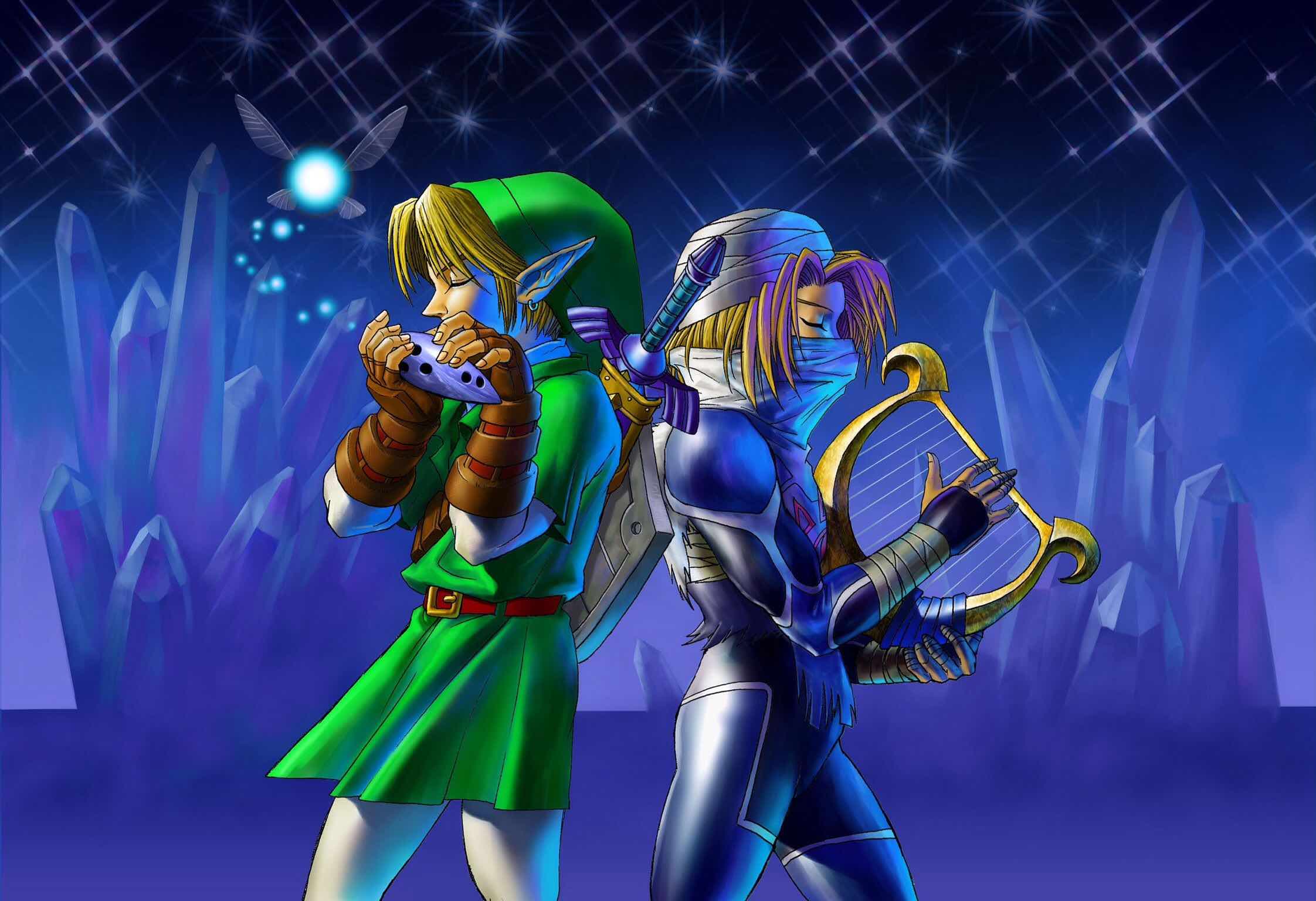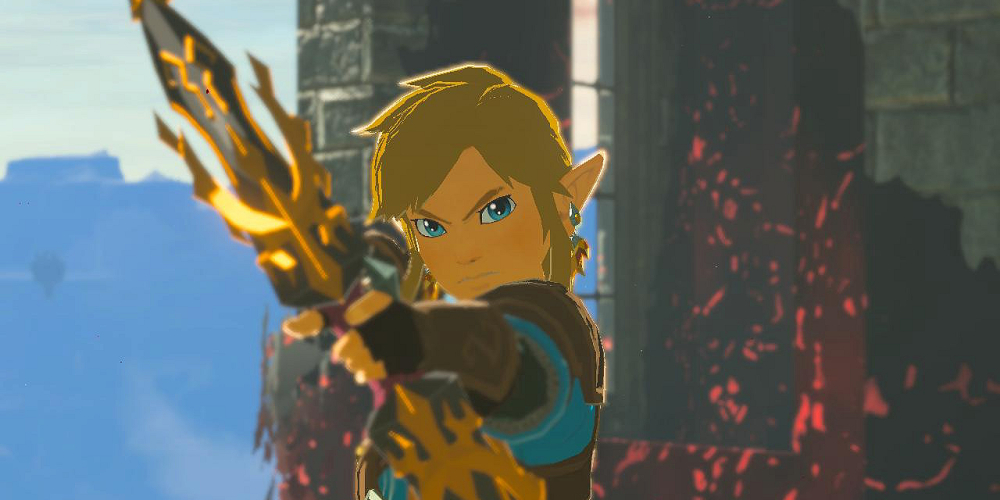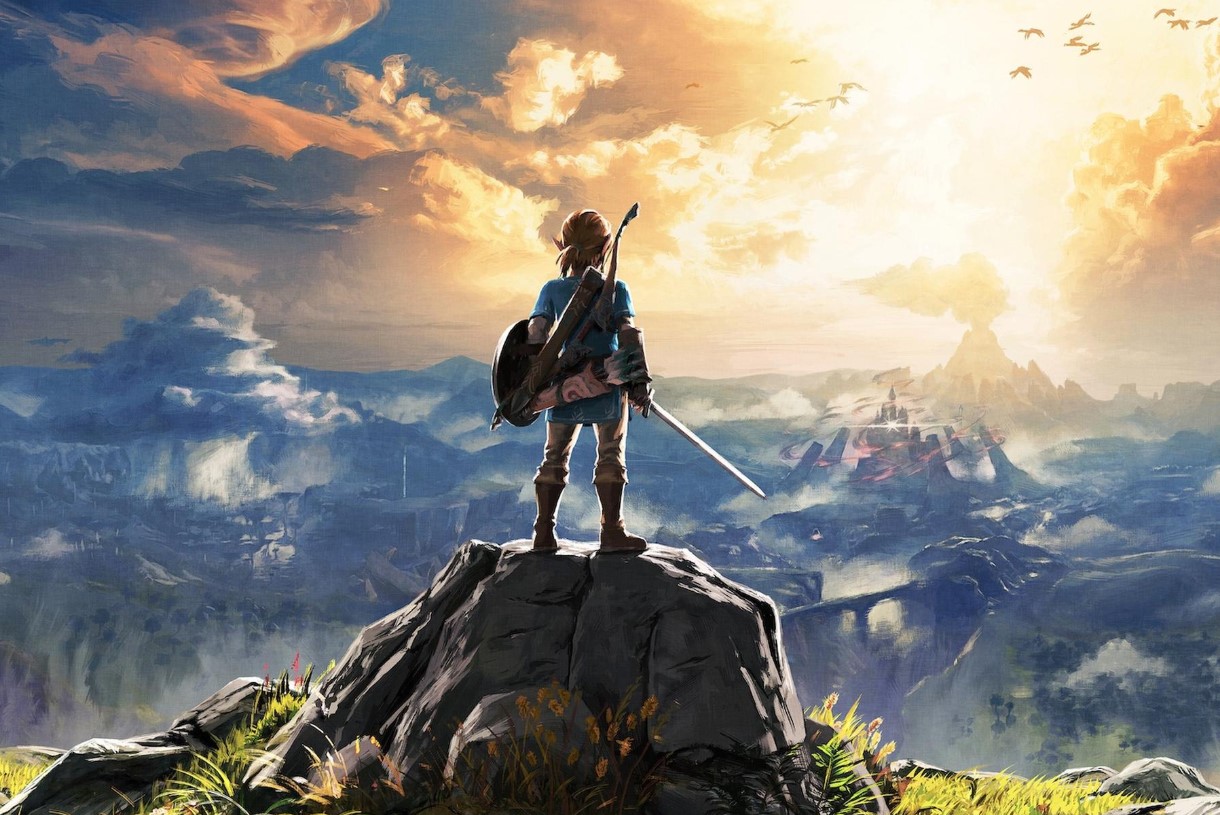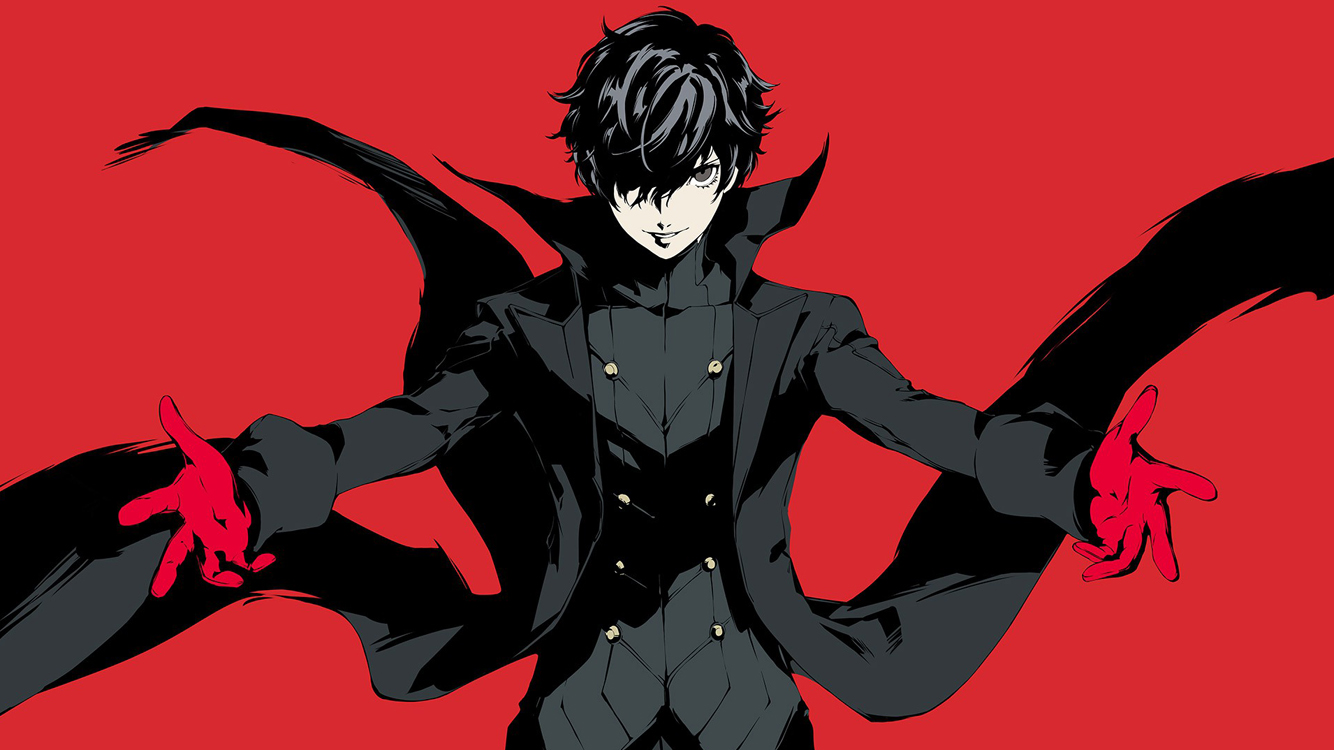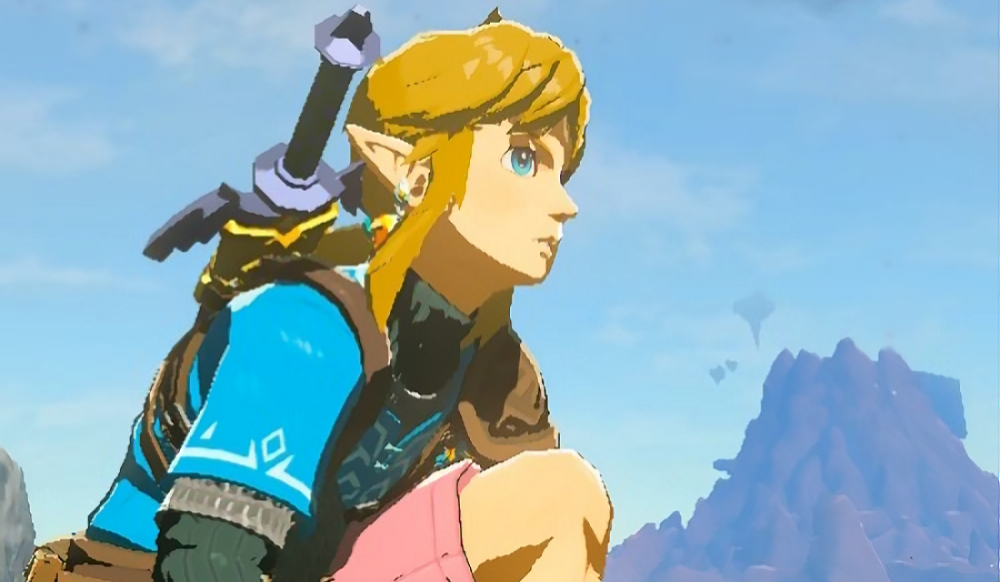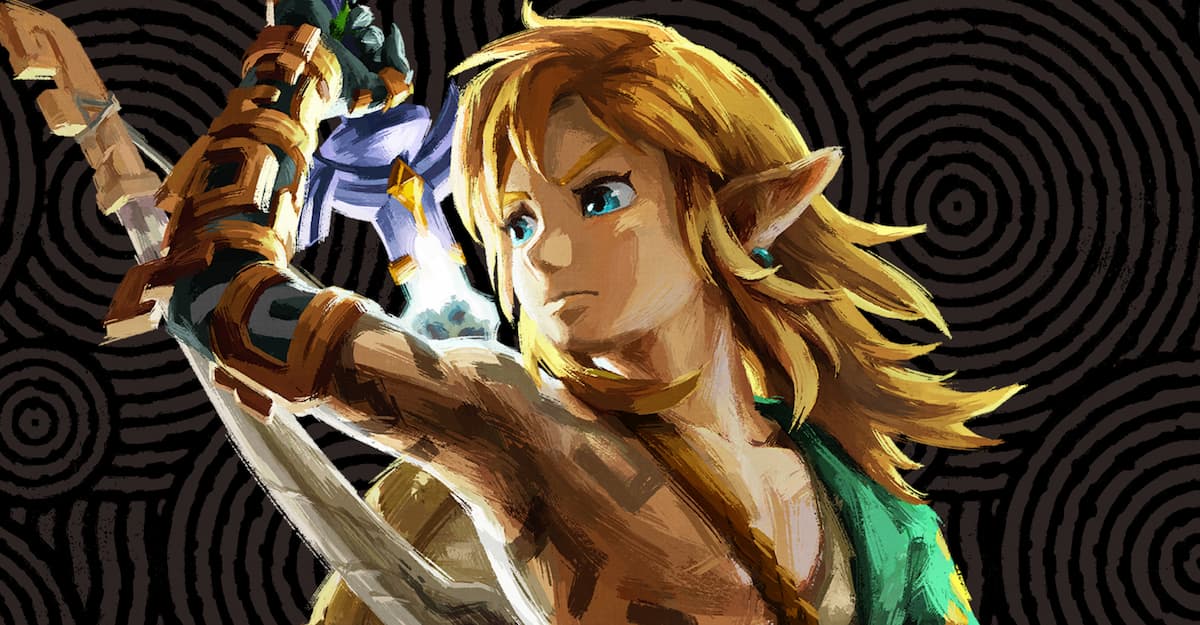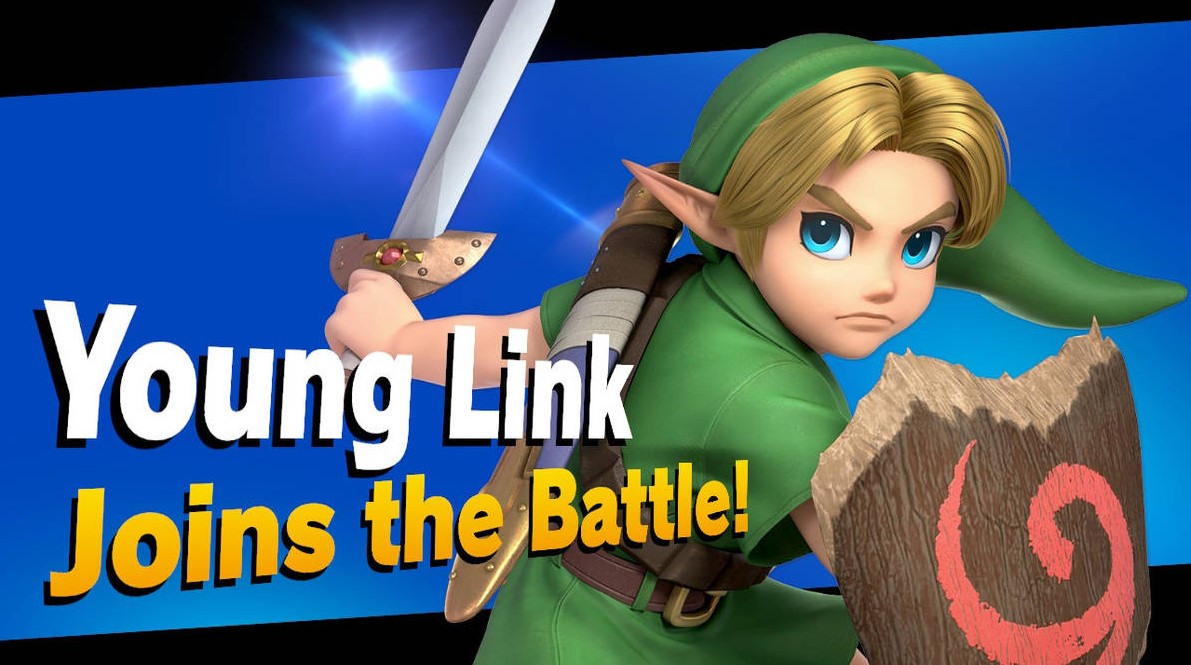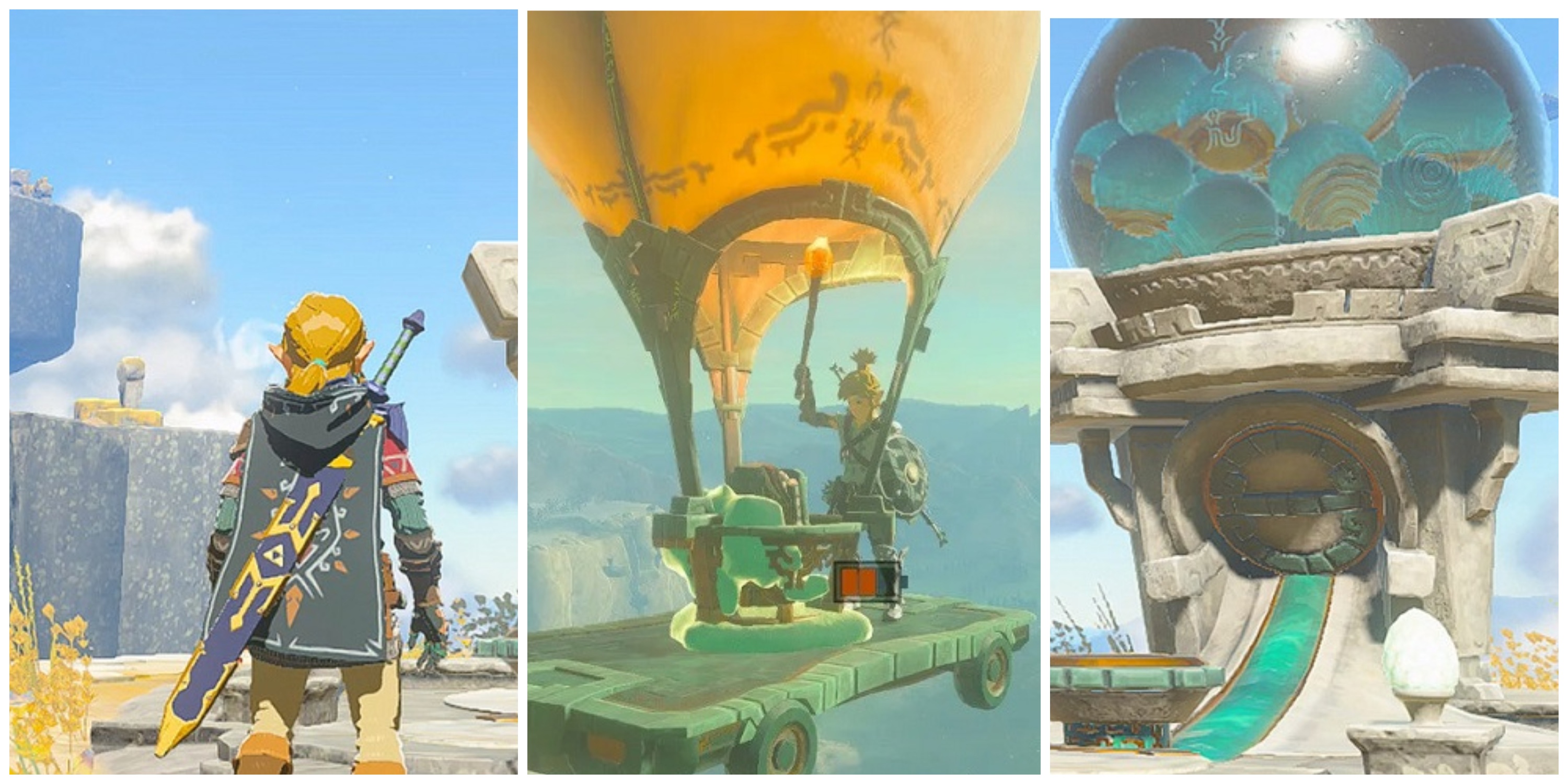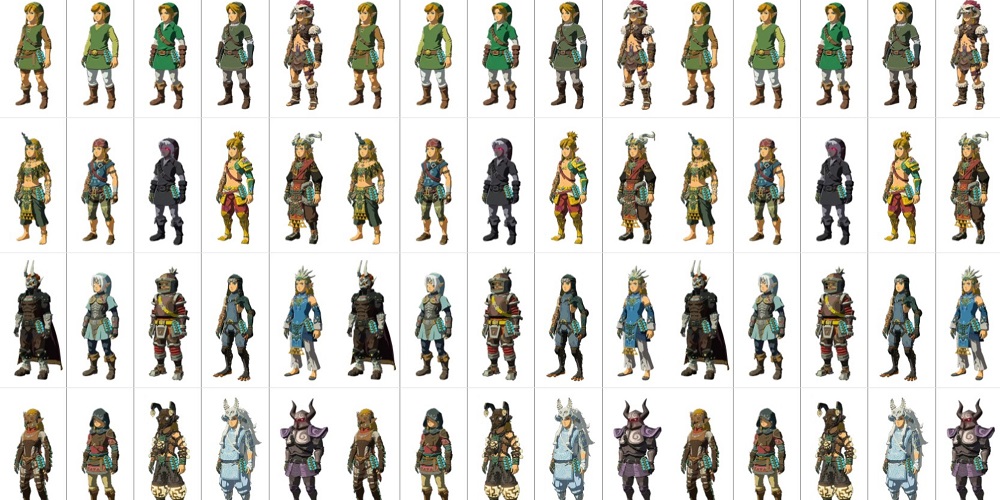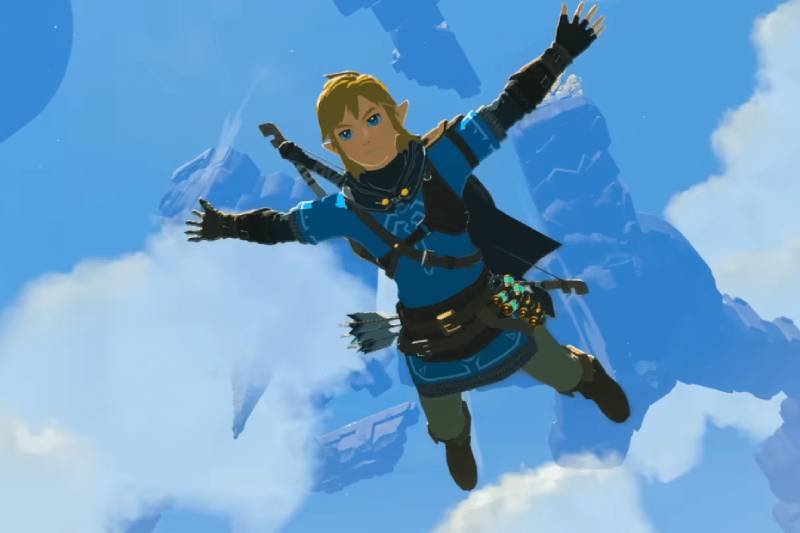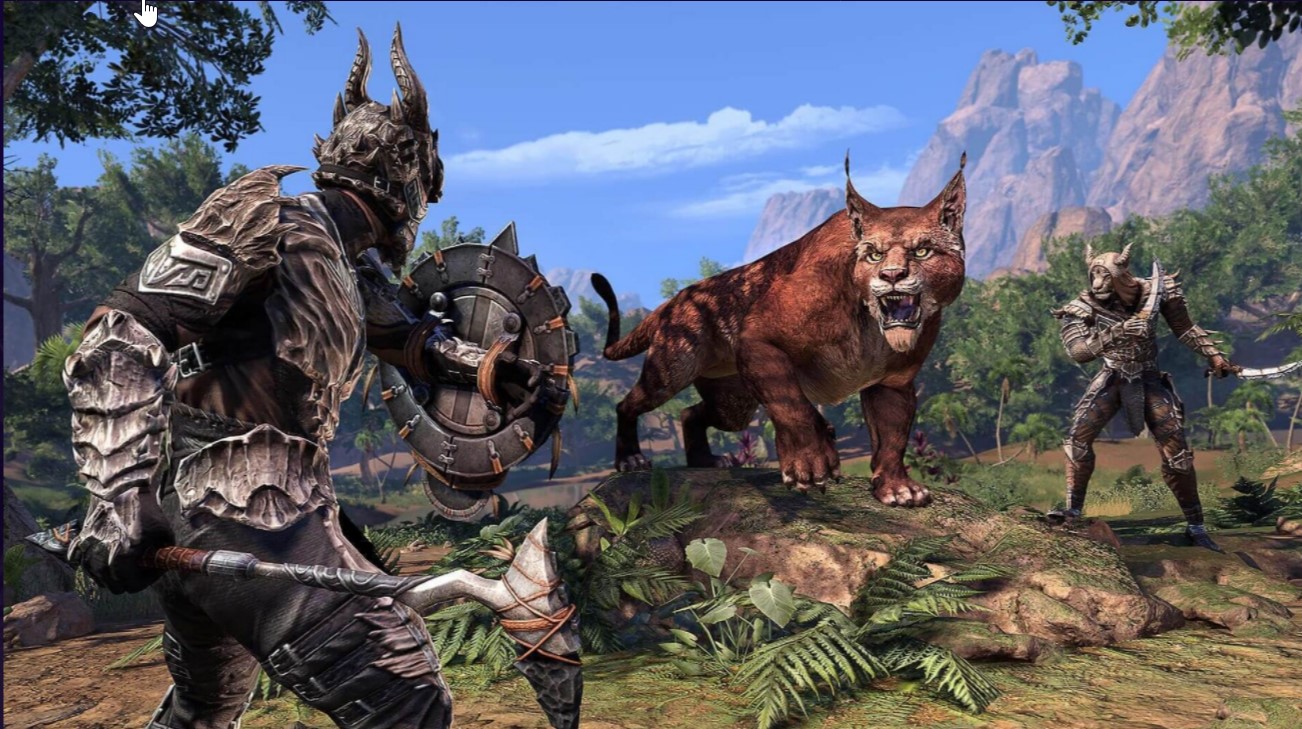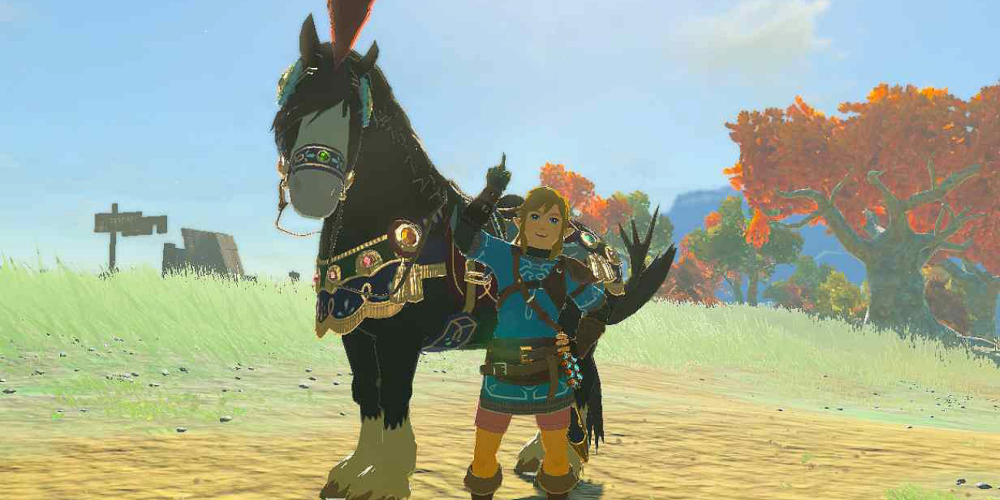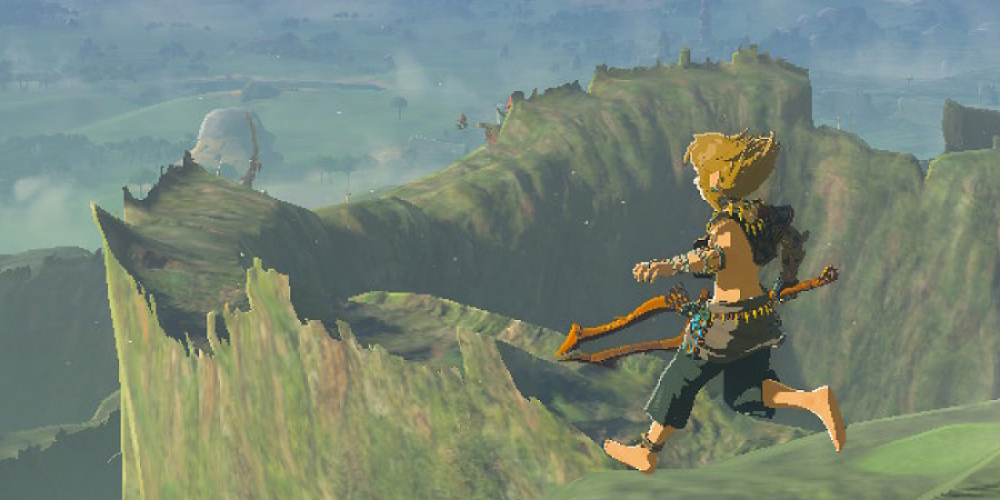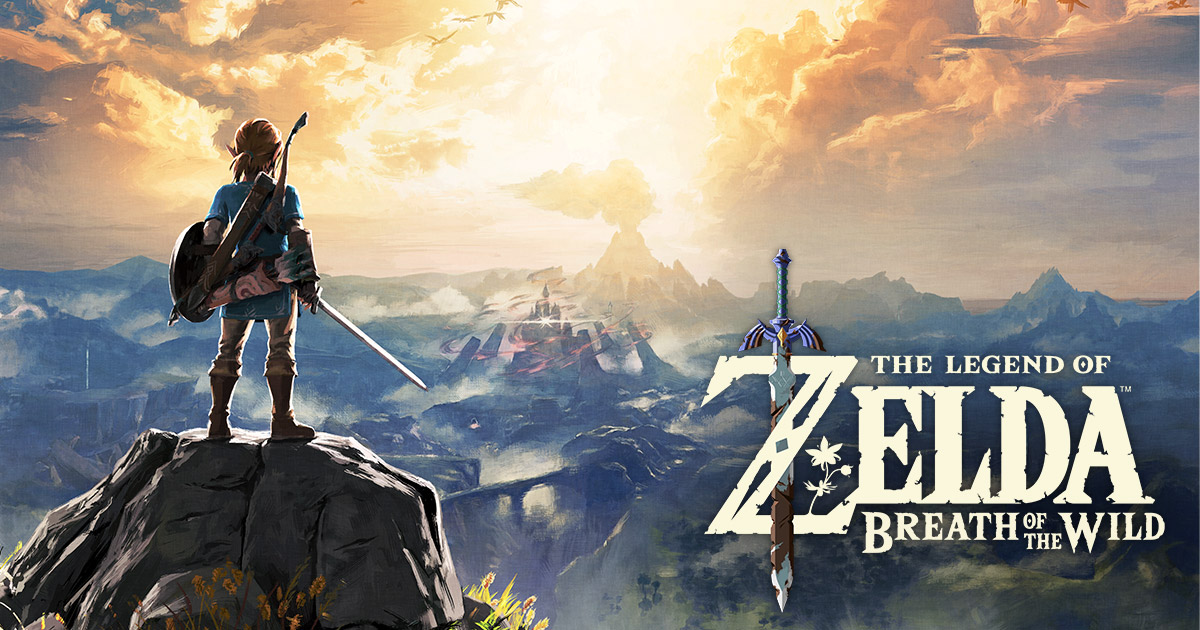
A Tale as Old as Time
The Legend of Zelda: Breath of the Wild was one of 2017’s biggest hits and remains the best reviewed game on the Nintendo Switch at the time of writing. However, when Nintendo is so slow to lower the prices of its first-party titles and there are so many stellar new releases like Super Mario Party and Dark Souls: Remastered competing for your time, gamers have to ask themselves: is Breath of the Wild still worth it?
A Story Worth Experiencing
The main story in Breath of the Wild is one of the most compelling Nintendo has ventured to tell so far in the Zelda franchise. 100 years prior to the events of the game, a prophecy of ruin comes true and Hyrule is ravaged by an ancient evil known as Calamity Ganon. Civilization itself is brought to its knees under its onslaught, and even Link is mortally wounded while trying to fulfill his duty and destiny to defeat Ganon and seal it away. 100 years later, Link awakens at the beginning of BOTW in a resurrection chamber that has preserved his body and healed his wounds. He has no recollection of the events of the past, and he’s unaware of the deaths of his closest allies, nor of the fact that Princess Zelda went to face Calamity Ganon alone after he fell in combat. After completing one of the most memorable and effective tutorials in modern gaming, Link is tasked with stopping Calamity Ganon and saving Princess Zelda, who is presumed to still be locked in her century-long battle with Ganon.
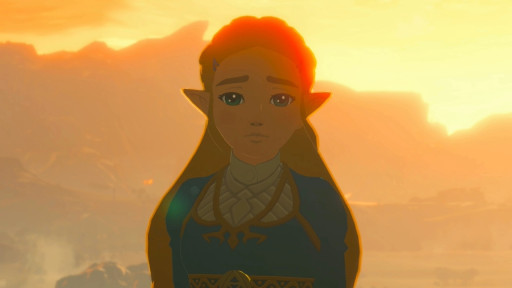
As Link puts together the pieces of his memory, you learn that Princess Zelda is a more deep and believable character than in previous series outings.
Perfectly Balanced, As All Things Should Be
Pretty heavy, right? Although this brief introduction might make it seem that BOTW must be all doom-and-gloom, the game really does try to walk a fine line between tragedy and whimsy. Accordingly, the sum of its parts ultimately lay somewhere between the dark, urgent atmosphere of Twilight Princess and the unapologetically beautiful, witty nature of Wind Waker. The fact that BOTW is able to strike such a balance in its narrative is a real achievement and makes the game worth it all on its own.
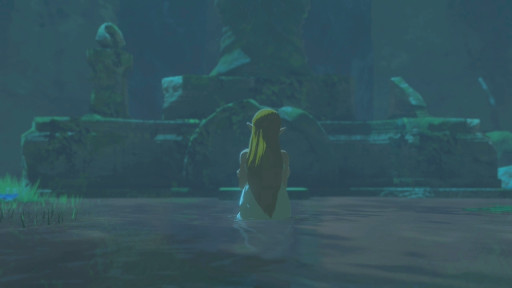
Cutscenes range from informative to comedic, and some are plain, gut-wrenchingly emotional.
Because the story removes the player from the events of the Calamity (the period during which Hyrule was devastated by Ganon) by a century, an equally impressive balance is achieved: BOTW is a story-driven open-world game that doesn’t make you feel guilty for engaging with its gameplay beyond working towards the completion of a time-sensitive main quest. Hyrule is a sprawling world that actively works to draw you deeper into it, and Zelda’s already waited on Link for a hundred years—what’s a few dozen side quests and some impromptu exploration going to hurt? Since what the game is telling you to do and what it allows you to do are in agreement, BOTW is an incredibly freeing experience that accomplishes what other open-world games can’t.
Hyrule is Bigger and Better Than Ever Before
BOTW has been praised as a return to form for the franchise, and this can be largely credited to the game’s stunning and vast game world. It moves away from recent Zelda series trends, returning instead to the roots of what made the original The Legend of Zelda for the NES so fun to play. Innovative, open-ended world design takes the place of rigidly linear questlines, and chatty companion characters with a tendency to over-explain everything to a sometimes-insulting degree (Hey, listen!) have been dropped in favor of embracing mystery and adventure. Never before in the Zelda franchise has Nintendo brought Hyrule more to life than in BOTW, and it is by far one of the most charming and memorable worlds that modern RPGs have to offer.
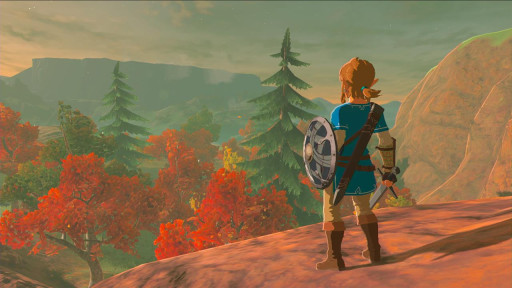
The Akkala region exists in a perpetual state of autumn, and you can expect each of BOTW's regions to be equally attractive and unique in their visuals and terrain.
From the moment you complete the game’s tutorial on the Great Plateau, you are immediately completely free to roam Hyrule as you please—if you can see it, you can go there. BOTW doesn’t block you off from areas with raised bridges, overgrown foliage, or drowsy Snorlaxes. Instead, the game uses obstacles like high-level enemies that’ll clean your clock if you aren’t ready for them, inhospitable weather, and difficult terrain to discourage you from sticking your nose where it doesn’t belong yet. While the game is good at this, it’s even better at leading you where it wants you to go. Hyrule is inviting and constantly encourages you to explore its depths, and the game world is chock full of enemies, side content, and secrets that catch your eye and reward you for going off the beaten path.
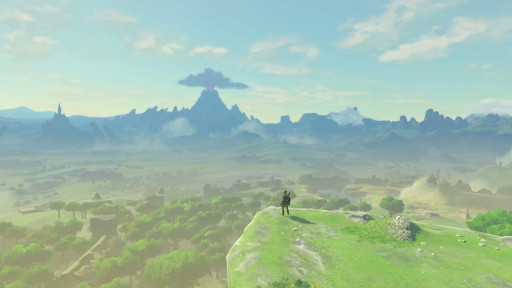
BOTW's take on Hyrule is very good at making you feel insignificantly small.
An Absolute Joy to Play
If you play games to have fun, then BOTW is probably for you. Since it was designed with both Switch and the Wii U in mind, it’s very easy to pick up and put down in short bursts of play, and it’s even easier to sit down with it for lengthier sessions. This is largely owed to the game’s quickness to save and load your progress, as well as the fact that it has one of the most forgiving fast travel systems in modern gaming (none of Skyrim’s “you cannot fast travel when enemies are nearby” nonsense here). If fast travel isn’t your thing, just traversing Hyrule’s diverse environments is enjoyable all on its own. Whether you walk, swim, climb, paraglide, shield-surf, or ride horses and other mounts, there’s almost no way to go from point A to B without enjoying the ride.

The paraglider is one of the most welcome additions to the Zelda series, and using it to float around Hyrule never gets old.
The foundation that supports BOTW’s gameplay can be found in the game’s impressively deep systems, and it’s a strong one. Put a lit torch to grass and the fire will spread, burning everything in its path and creating updrafts that’ll send Link flying high on his paraglider. Shoot an electric arrow into enemy-infested waters and watch their valuable remains float to the surface, going wherever the current takes them. Sneak up behind monsters in the rain for an added stealth edge, and a nearby lightning strike may start fires and put your foes on alert. You get the point. The takeaway is that these interlocking and responsive mechanics ensure that no two play sessions are ever quite the same, and this aspect of the game alone makes BOTW a must-play experience.
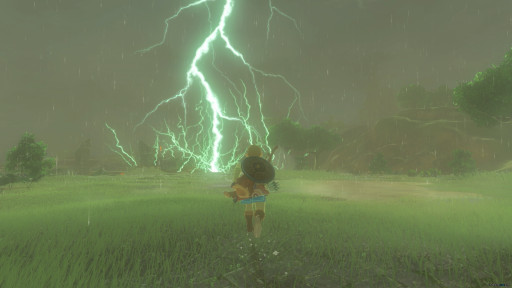
Lightning strikes in BOTW are indiscriminate and lethal—make sure to dequip any metal equipment!
Towers and Shrines Light Your Path
Accentuating BOTW’s game world are scalable towers, similar to those found in Assassin’s Creed and Ubisoft's other open-world titles. Once climbed, towers act as fast travel destinations and points of vantage from where you can decide where to go next. These massive towers are joined by smaller but equally important shrines, which also serve as fast travel locations and whose puzzle interiors Link must conquer in order to gain Spirit Orbs. These can be exchanged for Heart Containers and Stamina Vessels. Heart Containers perform their usual function of increasing Link’s health, meanwhile Stamina Containers increase his brand-new stamina meter, which is depleted when sprinting, swimming, and climbing. This makes completing shrines one of the most important pieces of BOTW’s gameplay loop, as your ultimate goal is to strengthen Link for his upcoming battle with Ganon.

Calamity Ganon has made his lair in Hyrule Castle for the past century, and it always challengingly looms in the center of the map.
When Link activates towers and completes shrines, they change in color from orange to blue. In this way, they serve as a combined progress bar and scrapbook of sorts that you see anytime you look out on the world from a high place. Coupled with the game’s huge map size, these landmarks provide an unmatched sense of scale and progression as you explore Hyrule. Additionally, they add to BOTW’s pick-up-and-play nature by giving you clear goals to work toward and are sure to scratch any completionist itch.
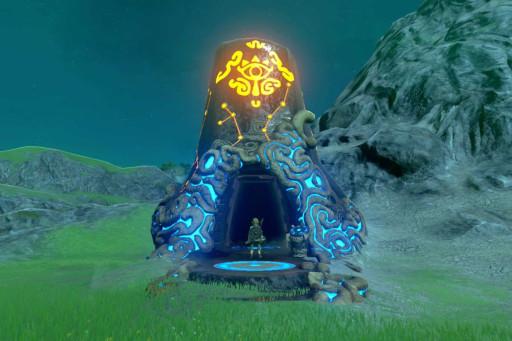
Shrines glow orange before activating them and turn blue after obtaining their Spirit Orbs, but unfinished-yet-activated shrines can still be used as fast travel points.
A Puzzling Design Choice
In terms of gameplay, BOTW marks a vast departure from the rest of the franchise. The most noticeable change is the omission of dungeons, which have been a Zelda mainstay since the original game. They are replaced by Divine Beasts, massive pieces of ancient machinery that must be freed from Calamity Ganon’s control and turned against it. Rather than “kill” the Divine Beasts like the collosi in Shadow of the Colossus, Link must instead make them safe to enter, at which point he is tasked with solving giant puzzles that span the Beasts' entire inner workings. While these puzzles can be challenging (seriously, where the hell is that last terminal?), they offer little in the line of enemies and culminate in mildly disappointing boss fights.
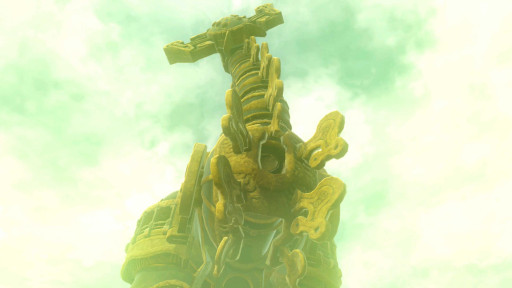
Vah Naboris, the Divine Beast of the Gerudo Region.
That’s definitely a negative, but it’s hardly grounds for skipping out on the entirety of what BOTW has to offer. What’s lost in the replacement of traditional dungeons with the Divine Beasts is somewhat salvaged by the game’s aforementioned shrines, of which there are dozens. While they are also guilty of being puzzle-heavy, a large portion of their puzzles are really good and make the act of forgiving the game of its shortfalls much easier. Some critics are extra hard on BOTW for its handling of Divine Beasts and shrines, but they really don’t detract from—and in some ways actually add to—the heart of the game enough to warrant giving the game a pass.
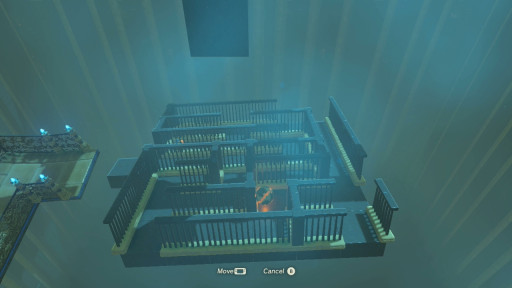
Okay, most shrines are great except for this one—along with a tiny sampling of other shrines with mandatory motion-control sections.
A Little Something on the Side
Also different this time around is the inclusion of true side quests, complete with their own tab in the game’s pause menu and detailed descriptions. These do occasionally amount to fetch quests, but even those are as charming and well-written as the more nuanced ones. Most importantly, very few side quests ever feel like slogs or unfair in their design, something other open-world RPGs could really benefit from imitating (cough, Bethesda, cough). Player exploration is further incentivized by Hyrule’s infestation with hundreds of Koroks, giggling fairy tricksters that hide wherever there are small environmental oddities and reward you with their foul “seeds” when discovered. Once again, these additions are perfect for short play sessions on Switch during your commute or breaks at work, and they add even more potential value to your purchase.
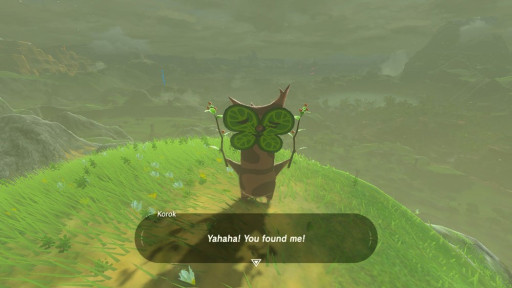
There are over 400 Koroks spread across Hyrule. Think you can find them all?
The Final Verdict:
The Legend of Zelda: Breath of the Wild is a truly unique game that nails storytelling and open-world RPG gameplay in ways that other games will likely be emulating for decades to come. Whether you measure a game’s value based on the hours of entertainment it contains or the intensity of engagement that it provides, BOTW has you covered on both fronts. The game is as vast as it is deep and there is no shortage of things to do in Hyrule, and the game can be easily enjoyed in short bursts or for longer traditional play sessions. If you’ve held out since the game’s release, I cannot recommend enough that you give BOTW a try. If you do, it may be the best $60 you spend this console generation.
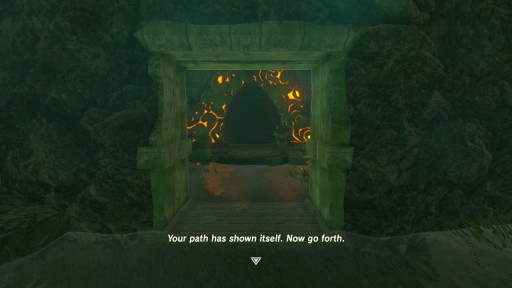
I give The Legend of Zelda: Breath of the Wild 9 stars out of 10. Seriously, stop reading and go play it.
You may also be interested in:

